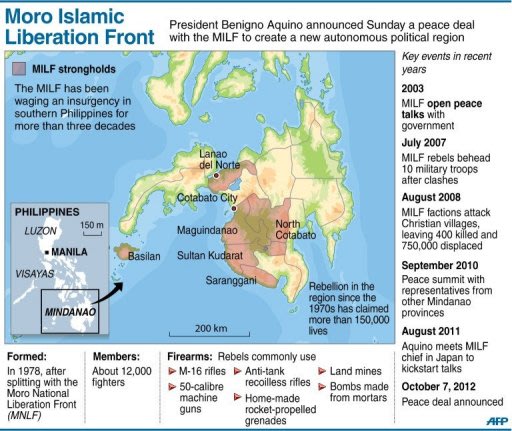
The Philippine Government (GPH) and the Moro Islamic Liberation Front (MILF) reached a preliminary, yet significant, “framework agreement” to achieve permanent peace between them. As a framework, it is a complete roadmap towards a settlement. However, the devil will be in the details, particularly in areas of power-sharing and wealth-sharing.
On the one hand, the basic points of the “framework agreement” point to the acceptance of the MILF of the constitutional autonomy framework and the discarding of their previous assertion of independence. On the other hand, these preserve, to a certain extent, Moro self-rule, and had the government accepting the broadest leeway within the boundaries of the autonomy principle.
One example of the bending backward of the government is the allowing of a distinct police force, albeit under the supervision and command of the Philippine National Police. Another is the agreement on the establishment of the Sharia courts within the new “Bangsamoro” political entity subject only to the Supreme Court. Still another is the greater leeway for legislative action through a “ministerial” (read parliamentary) arrangement subject only to the national laws. It even allows taxation, apart from the national and local taxes, for the “Bangsamoro.”
At the other end, the MILF—in the new “Bangsamoro” political entity—accepts the unitary state system whereby national defense, diplomatic relations, currency and coinage, and other key powers of a state are wielded exclusively by the Philippine state. It also accepts the non-secular nature of and pluralistic relations within the “Bangsamoro.”
If the concessions by both sides are taken into account, then the “framework agreement” is by far superior to the Jakarta agreement of 1996 between the Philippine government and the Moro National Liberation Front (MNLF). The “Bangsamoro” also covers a wider area—the present ARMM plus areas of cities and towns contiguous to ARMM or conducive to practical governance which have already signified their intention to join ARMM in the 2001 plebiscite.
So far, the “framework agreement” has received support from the crucial Filipino majority and the broad Moro public. It also enjoys acceptance and support from the international community, including key Arab and Muslim countries.
However, efforts still need to be exerted to convince MNLF and minority factions in both MILF and broader political spectrum to accept and support the agreement. There is always the possibility—or even probability—that not all who have interests at stake in the continuation of the current Moro conflict will accept the agreement. They will try to sabotage its eventual ending in a permanent agreement for a lasting peace.
At the end of the day, however, the “framework agreement” represents a bold, out-of-the-box solution to the historical and national crisis that is the Moro rebellion. It deserves to be given a chance to succeed.

0 comments:
Post a Comment